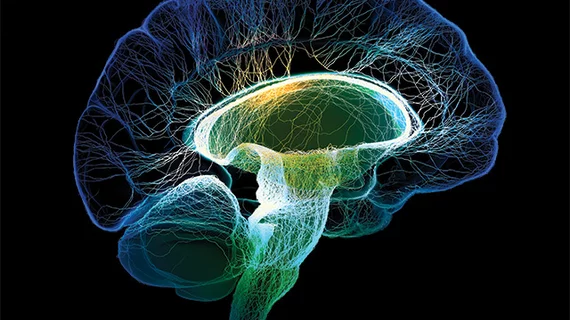Neuroimaging method measures disease severity in Parkinson’s patients
Dopamine transporter (DAT) SPECT may be a useful imaging biomarker to determine the severity of Parkinson’s disease, according to an April 17 study published in the American Journal of Roentgenology.
Parkinson’s disease (PD) is characterized by a loss of dopaminergic neurons in the substantia nigra pars compacta (SNpc) area of the brain, resulting in presynaptic nigrostriatal dopamine dysfunction. The dopaminergic neurons release neuromelanin into surrounding brain areas which directly contributes to the progression of Parkinson’s.
Neuromelanin MRI and DAT SPECT have both shown promise for evaluating neuromelanin, which is central for understanding “PD pathogenesis, assessing PD progression, and monitoring PD therapeutics,” wrote first author, Hiroto Takahashi, Osaka University Graduate School of Medicine in Osaka, Japan, and colleagues.
“In the current study, we compared neuromelanin MRI with DAT SPECT to discern the relation between dopamine neurons in the SNpc and presynaptic striatal dopamine capacity while evaluating the conditions of the nigrostriatal dopaminergic system in accordance with disease severity in PD,” the researchers added. “We also aimed to explore the use of these imaging biomarkers to quantify disease severity during progression of PD.”
The researchers included 40 patients with Parkinson’s disease who underwent neuromelanin MRI and DAT SPECT in the study. On MRI images, Takahashi et al. recorded the signal-to-noise (SNR) ratio in the SNpc while noting the striatal specific binding (SBR) ratio on DAT SPECT images.
Overall, SNR and SBR were much greater in early-stage patients compared to the advanced stage group. Of note, there were 40 patients in stages 1-3 and 10 patients in stages 4-5.
Additionally, the ROC AUCs for differentiating early and advanced stage groups was 0.73 for SNR and 0.89 for SBR. The coefficients of correlation were −0.47 for SNR versus Hoehn and Yahr (HY) stage and −0.67 for SBR versus HY stage.
“The current study shows that it is possible to quantify the degeneration of dopaminergic nigrostriatal transporters in PD using striatal SBR derived from DAT SPECT with good correlation with the HY stage,” Takahashi and colleagues wrote. “The results are consistent with the results of previous studies indicating that DAT SPECT provides a quantitative biomarker for the severity of nigrostriatal dopaminergic degeneration in PD.”

